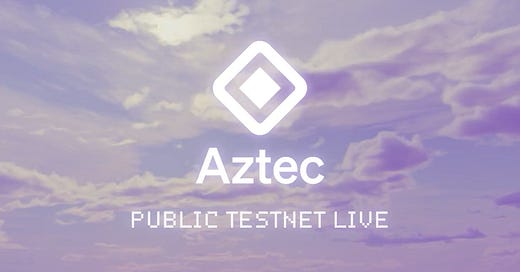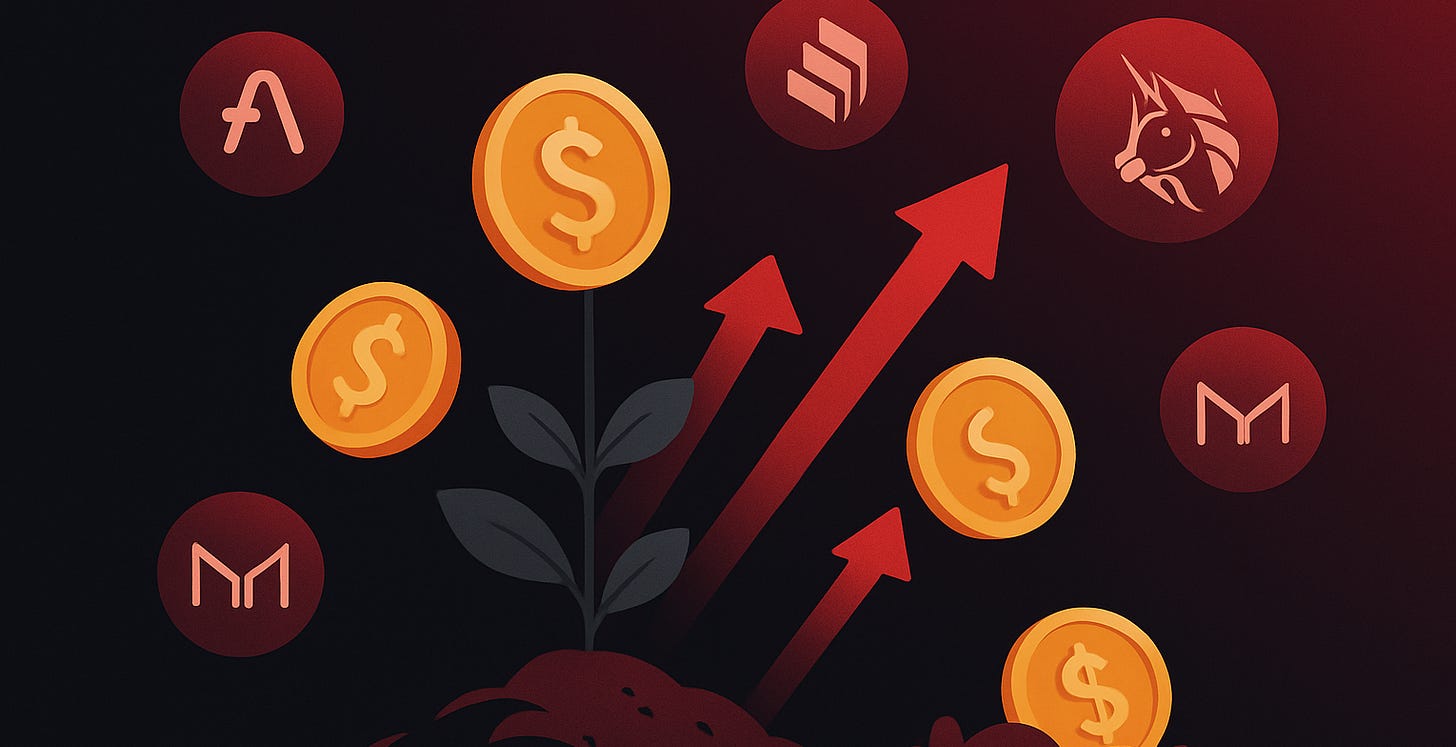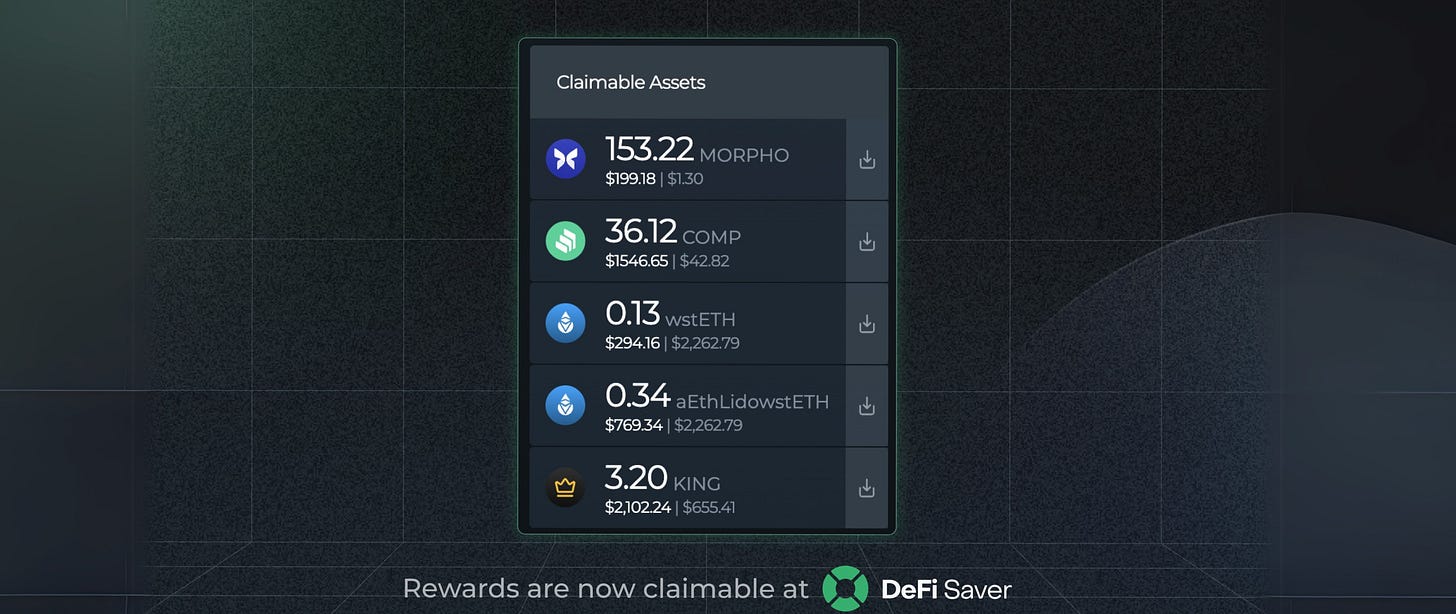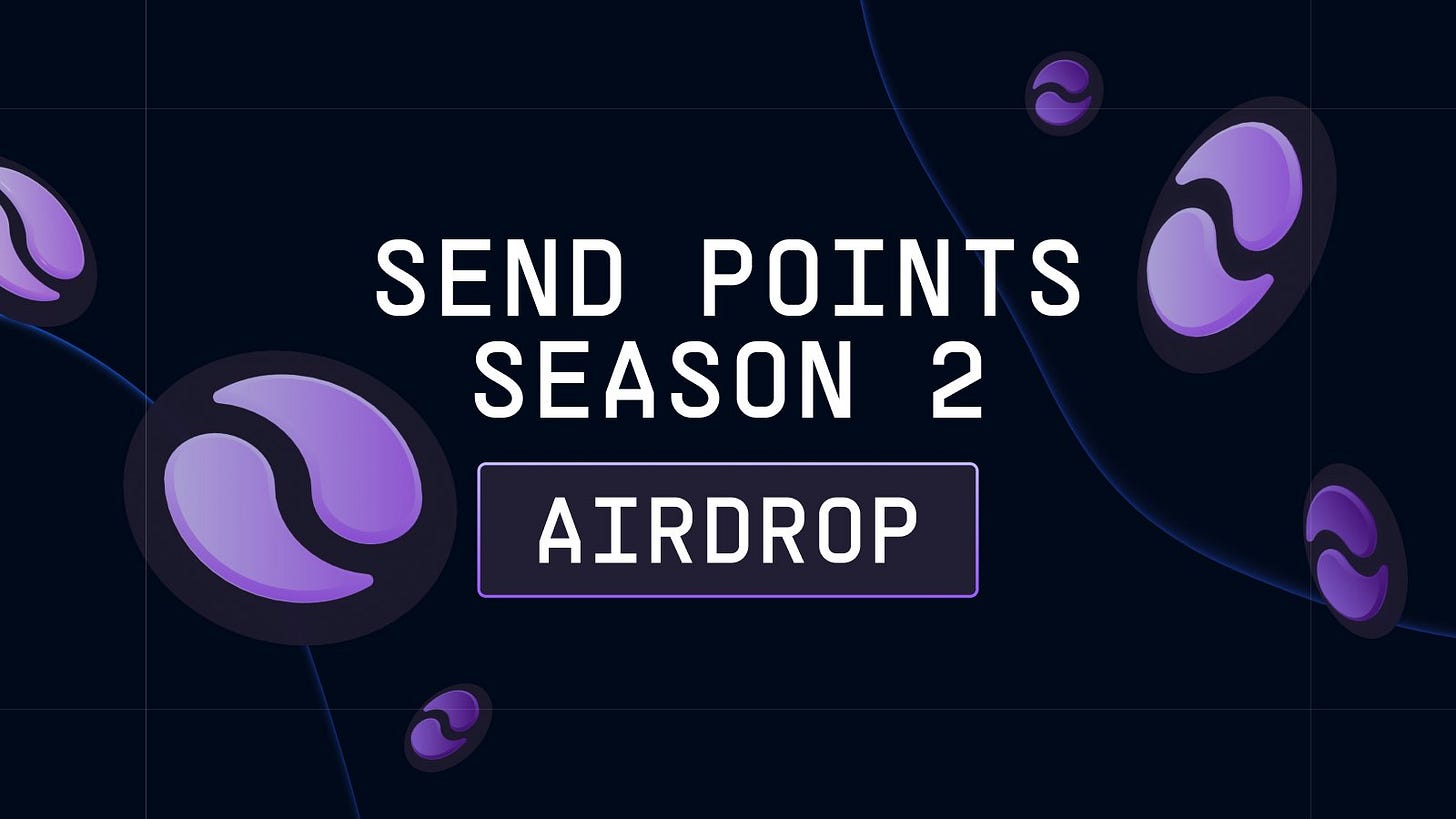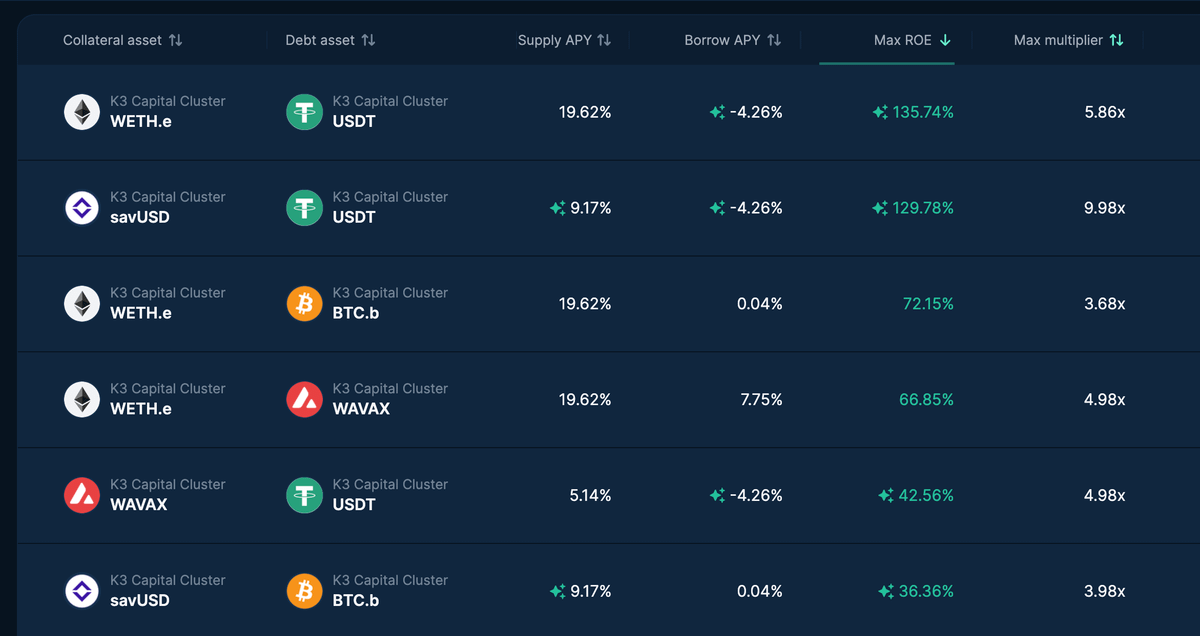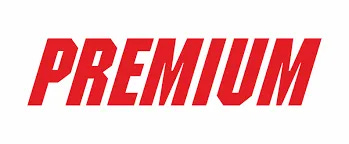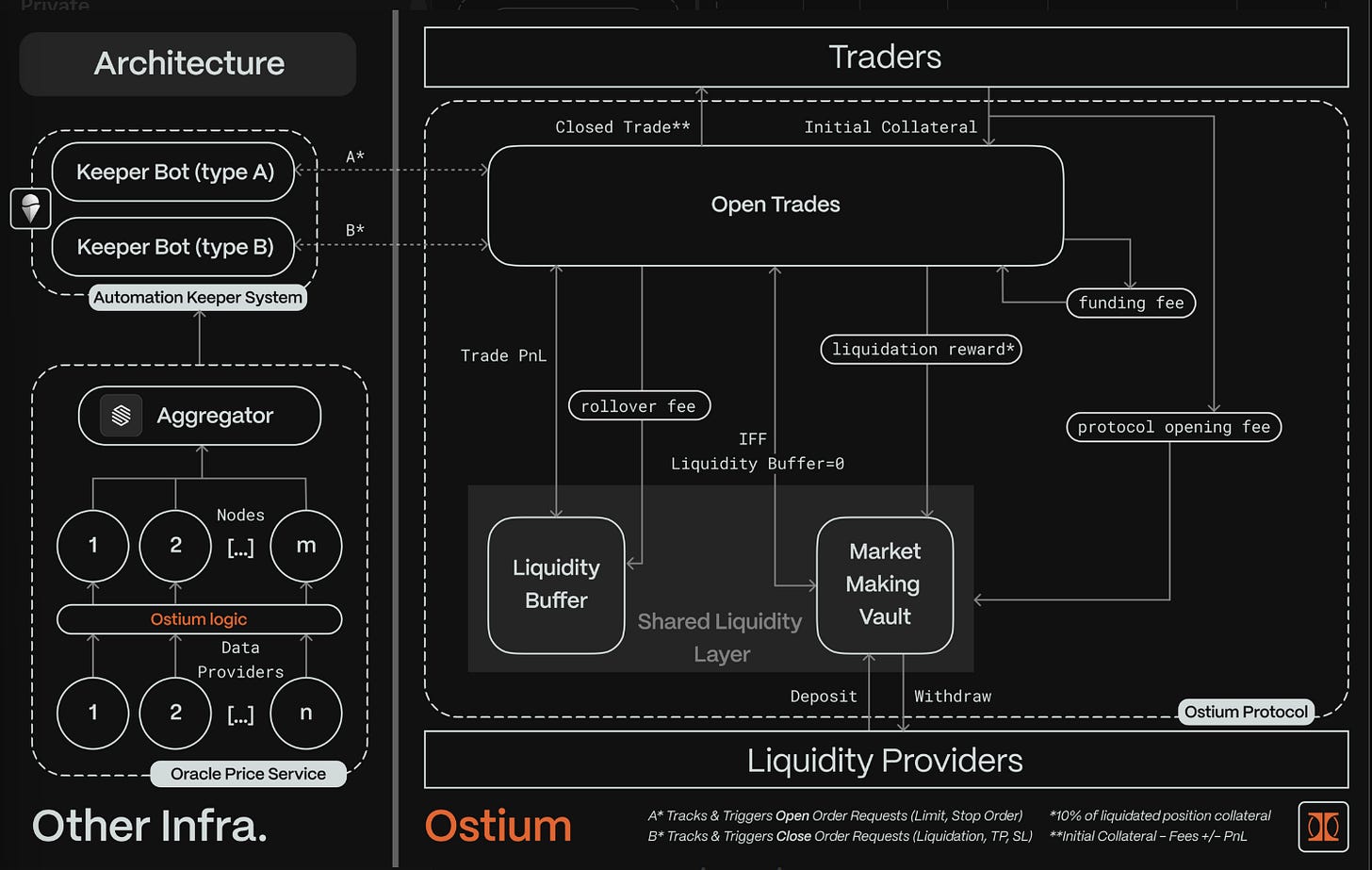Aztec Public Testnet Launch, Superform Launches PTs, Premium Preview : Earn 16% + airdrop by LPing Perps DEX
Launches 🚀
Aztec has launched a fully decentralized, privacy-preserving L2, enabling private smart contracts and applications like DEXs, games, and social apps. Developers can now deploy private contracts in minutes, while users can run sequencer nodes to support the network.
Ethereum R1 has launched as a fully public, tokenless rollup built for decentralization and censorship resistance. Backed by donations and designed with permissionless proving and long upgrade delays, it aims to counter VC-driven L2s. Built on Taiko’s open-source stack, Ethereum R1 commits to public good funding until 2030, after which all fees will be burned.
Farm and Earn Smarter — Daily Guides Await
From beginners to pros, we deliver curated daily insights — featuring the best farms, untapped airdrop opportunities, and in-depth protocol breakdowns.
Stay ahead, earn smarter — join our Premiums now.
👉 Get todays premium with our 7-day free trial.
Updates 📰
Phantom now supports gasless swaps on mobile, allowing users to pay fees using the token being swapped when their SOL balance is too low. The feature requires a minimum trade of $75 and is currently mobile-only.
Ethena Labs has integrated Pendle’s eUSDe and sUSDe PTs into Aave, marking the first time billions in PT collateral are accessible on the platform. Users can now loop these fixed-yield assets against Aave’s stable borrow rates (~4%) to achieve yields up to 25% with leverage.
Scroll has ended Sessions 2, with a snapshot taken on April 30. Marks no longer accrue, but can still be viewed. Future rewards will focus on real usage, with updates expected in Q4.
Enso has launched 1-click LP migration to Unichain, letting users move Uniswap positions from any EVM chain in a single transaction. Built with LayerZero and Stargate, the tool streamlines cross-chain LP transfers and will soon be available as a widget.
Kelp has integrated Chainlink's Proof of Reserve to secure rsETH minting with automated onchain 1:1 collateral checks. The integration aims to prevent overminting and reinforce rsETH's reliability as DeFi collateral.
Morpho has launched on World App with up to $5M in rewards for lending and borrowing across curated vaults like USDC, WETH, ezETH, WBTC, and WLD. Users can access Morpho via Paperclip, Oku, and Legend front ends, all offering mobile-first interfaces with built-in bridging.
Do you have Unclaimed Rewards? If you are a DeFi Saver user, you can now see all earned rewards from supported protocols directly on the Portfolio page, covering more than 10 tokens, including $AAVE, $COMP, and MO 0.00%↑ RPHO. No more digging through dashboards—just clear, instant visibility into your earnings. Check now—there might be a surprise waiting.
Issues ⚠️
Alert: Hyperliquid’s Twitter account has been compromised. Avoid clicking any links, especially those leading to Discord. Stay safe and wait for an official update from verified sources.
Movement has delayed MoveDrop due to a sybil attack, governance issues, and market maker irregularities. Reclaimed tokens will be reallocated to community rewards, and governance reforms are underway. DeFi Spring incentives remain active across the ecosystem.
Upcoming ⏳
Level will allocate part of its reserves to Steakhouse USDC vaults on Morpho, aiming to boost slvlUSD stability with scalable, high-quality DeFi yield. This move diversifies its reserve strategy to support long-term growth.
Clearpool is partnering with Falcon Finance to launch USDf, a 14.3% APY overcollateralized synthetic stablecoin, on the Ozean platform. USDf will play a key role in Ozean’s Port, enabling access to RWA-backed yield strategies. Falcon brings over $140M in TVL and backing from DWF Labs.
Liquity V2 is set for mainnet redeployment by mid-May. This week, Cantina submissions are under review and being patched, with re-audits by ChainSecurity and Dedaub scheduled for next week.
Junction has released its 2025 roadmap, highlighting a phased rollout with beta testing now live, an invite-only referral program, and monthly reward seasons. The full launch will span multiple ecosystems, with completion expected by year-end.
Record Weekly Stablecoin Inflows! : Which Chains Are Winning?
Stablecoin supply is growing — and it's already shifting momentum across DeFi. Today, we’ll break down what it means for the market, and which chains are quietly starting to win
👉Watch here and subscribe to stay updated on our latest videos!
Airdrops 🪂
Suilend’s SEND Points Season 2 ends this May, with airdrop #2 coming soon. Usage has surged 300% since December, boosted by STEAMM and a $2M SEND buyback. Snapshots haven’t been taken yet, so users can still earn Capsules or qualify through leaderboards and Rootlets.
Mezo has launched a new rewards campaign with Galxe, offering users the chance to earn mats and other incentives. The quest is now live on Galxe.
Swell will reclaim all unclaimed wSWELL rewards earned before Feb 20 on May 15, redistributing them to active users. Going forward, unclaimed rewards older than 10 weeks will be reclaimed monthly.
Pell Network has launched an airdrop campaign with Valor Quest, offering up to 300 Pell Points and 500 Valor Points for completing in-game tasks. Points contribute to upcoming token airdrops, and the quest is now live on Galxe.
Farms 🧑🏻🌾
Euler has launched $200K in AVAX rewards on Avalanche. savUSD lenders and USDT borrowers can now earn incentives through the K3 Capital-curated market.
Superform has introduced yield tokenization for SuperUSDC on Base via Napier Finance. Users can earn up to 8.6% fixed APY on PTs, while LPs and YTs gain yield plus 50x Superform Points and Napier Points—without Eth gas fees.
Resolv has launched a new USR pool on Pendle via BNB Chain, with maturity on Nov 27, 2025. LPs earn yield from PTs, swap fees, Pendle rewards, and 45 points/day. YTs offer leveraged points, while PTs provide fixed APY for stable returns.
Stake DAO has launched a new reUSD-sDOLA strategy with ResupplyFi and Inverse Finance, now live on Onlyboost. The gauge earns over 2% of CRV inflation, distributing more than 50K CRV weekly to participants.
Shadow Exchange is offering 435% APR on the USDC/EURC.e pair, with $14.7K in rewards and over $516K in 24h volume. Liquidity providers can deposit directly on Shadow’s platform.
Drift and Exponent Finance now let users loop JitoSOL yields via the Exponent Isolated Pool. Restake into fragSOL or kySOL, deposit to earn PT tokens, and borrow JitoSOL on Drift to repeat the loop. Users earn $JTO and FUEL rewards.
For sponsorships, questions, or news tips, reach us at: support@todayindefi.com
Earn 16% + airdrop by LPing Perps DEX
Ostium: Onchain Perpetuals and Real World Asset Trading on Arbitrum
The Ostium Protocol is an open-source decentralized exchange on Ethereum Layer 2 Arbitrum, focused on providing onchain, non-custodial perpetuals trading for a wide range of assets, including Real World Assets. It aims to develop decentralized trading infrastructure that enables the trading of various asset classes in perpetual format.
Users can trade perpetuals on forex, commodities, indices, and major crypto assets, deposit stablecoins to supply liquidity, and engage with the community through open forums to share feedback and contribute to the protocol’s development.
Behind Ostium: Liquidity Flow and Risk Sharing between Traders and LPs
Ostium enables on-chain leveraged trading of real-world assets (RWAs) and crypto through synthetic perpetual contracts. Instead of tokenizing assets, it offers virtual exposure using fast oracles (Stork for RWAs, Chainlink for crypto) and automated execution (via Chainlink Automation and Gelato) for liquidations and trade triggers.
Trades settle in stablecoins with near real-time pricing. The protocol uses a dynamic fee model to manage risk:
Funding Fees – These help balance the market by discouraging too many traders from betting in the same direction, keeping the system stable.
Volatility Fees – These reflect the asset’s specific risk. Higher volatility means higher fees to manage the added risk.
Conditional Opening Fees – These encourage traders to balance open positions, rewarding those who take the opposite side to help the system stay balanced.
Ostium uses a two-layer Shared Liquidity system:
Liquidity Buffer – Absorbs traders’ PnL and handles routine settlements. This layer acts as the first line of defense, smoothing out everyday trading activity.
Market Making Vault – Backs up the buffer during volatility or imbalance. It steps in when needed to keep the system running and protect LPs from major swings.
LPs avoid impermanent loss but may be temporarily exposed to PnL shifts when the system is out of balance. In return, they earn trading fees and liquidation rewards. The dynamic fee model helps keep LP risk low by guiding traders toward balance.
Liquidity Pool Vault (Market Making Vault) & OLP Token
The Market Making Vault (also known as the Liquidity Pool Vault) is where users deposit USDC to support trading on Ostium. In return, they receive $OLP tokens, which represent their share of the vault and grow in value over time.
This vault plays two key roles:
For traders, it acts as a backstop, covering payouts when the Liquidity Buffer runs out so that winning trades are always paid.
For LPs, it’s a way to earn passive yield from trading activity on the platform.
The vault’s value ($OLP) increases as it collects:
50% of all opening fees from trades
100% of liquidation rewards (10% of a losing trader’s collateral)
These fees are automatically compounded back into the vault, so the value of each $OLP token rises as trading continues. The longer you hold $OLP, the more it's worth.
LPs can deposit flexibly or lock their deposit for additional benefits. Locking gives users more $OLP upfront — with boosts up to 6%, depending on lock duration and the vault's collateralization.
For example, if both Alice and Bob deposit 1,000 USDC when 1 $OLP = 1 USDC:
Alice locks for 365 days and gets a 3% boost, receiving 1,030 $OLP.
Bob deposits without locking and receives 1,000 $OLP.
If the vault grows by 10% over the year, Alice ends up with 1,133 USDC, while Bob gets 1,100 USDC — meaning Alice earned 33% more just for locking her funds.
Security
✅ Ostium is audited by Zellic and ThreeSigma.
✅ Besides Smart Contract audits, Ostium conducted extensive mechanism design research, parameter testing, and a full economic audit with DeFi risk management firm Chaos Labs.
The audit does not guarantee any hacks. Please do not invest with more than you can afford to lose.
Benefits
🌟 LPs support trader payouts and earn real yield from trading fees and liquidation rewards — with no impermanent loss and auto-compounding returns.
🌟 Traders can use stablecoins to open leveraged positions on RWAs (Forex, Commodities, Indices) and crypto, with near real-time pricing and smooth execution.
🌟 “Trade the News” lets users bet on real-world events with leverage, combining prediction markets (like Polymarket) and perpetuals.
🌟 Users earn scores for trading, referring friends, and holding vault deposits — which may count toward a future airdrop.
🌟 LPs can earn up to ~30% APY, auto-compounded. A higher vault TVL helps keep collateralization healthy and yield stable.
Risks
⚠️ Smart contract risk — Ostium is a DeFi protocol and may contain undiscovered bugs or vulnerabilities.
⚠️ Oracle risk — RWA price feeds rely on third-party oracles. Ostium uses Stork and Chainlink for both RWA and crypto assets.
⚠️ Vault collateralization risk — If the Market Making Vault (LP vault) falls below 100% collateralization due to high trader profits or imbalance, LPs may see reduced or temporarily negative APY until balance is restored.
⚠️ Market and liquidation risk for traders — Leveraged trades (especially in “Trade the News” mode) can result in full liquidation. High volatility or unexpected events may cause total loss of margin.
Official Links
If you have any questions or feedback feel free to reach us at support@todayindefi.com
Follow @todayindefi to keep up with the latest DeFi news on Twitter.
Disclaimer: Projects or tokens mentioned in this newsletter are often experimental or unaudited. Do your own diligence before using or buying anything mentioned.


